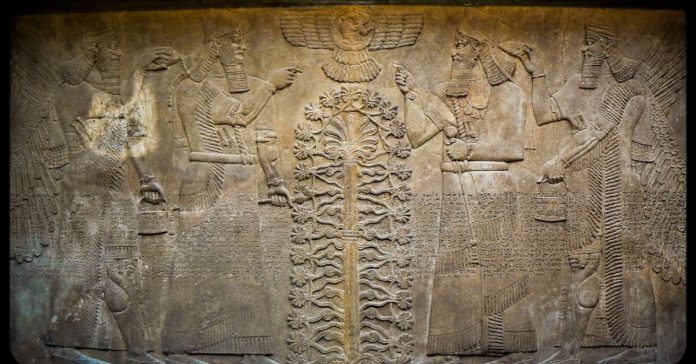Many have made the misappropriation of bas reliefs from the Assyrians as being “Sumerian”. They reference images of large stone carved reliefs from the The Temple of Nimrud. People also refer to the temple as the Northwest Palace. King Ashurnasirpal II built the palace around 883–859 BCE.
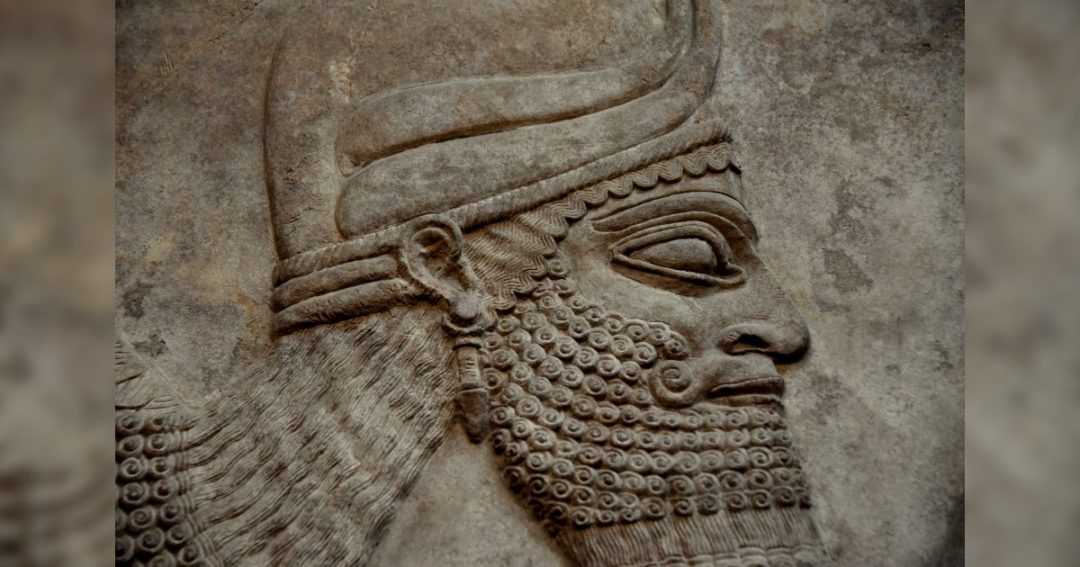
Reptillians?
The bas reliefs in the Northwest Palace at Nimrud depict various figures and scenes central to Assyrian mythology and religion. Artists depicted the Apkallu, or “Seven Sages,” in the reliefs as beings that are part human, part fish or bird. They often have a human head and torso, with the lower part of their body resembling a fish’s tail or bird’s feathers.
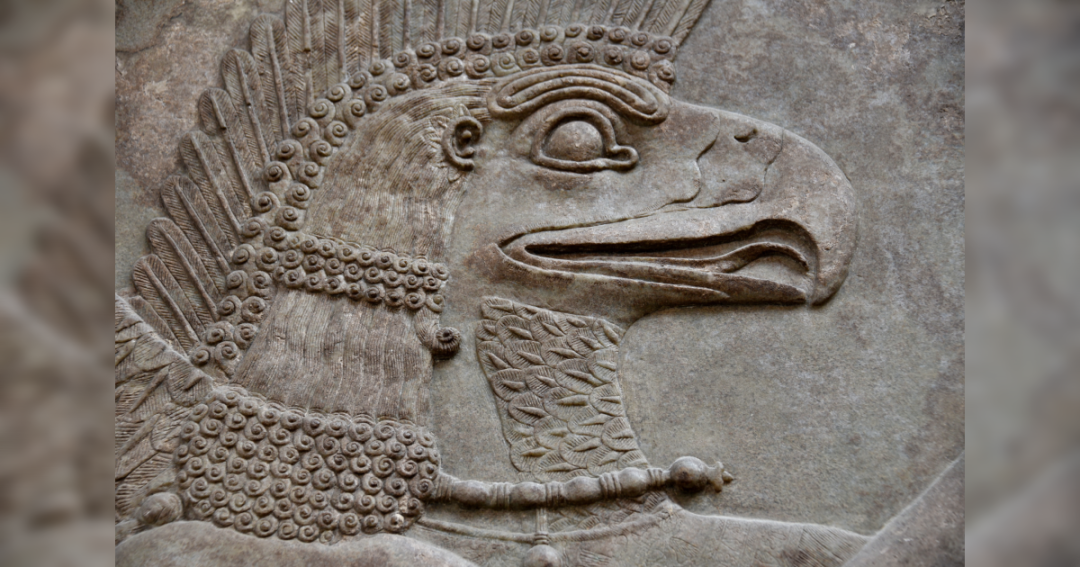
Enki sent the Apkallu, demigods in Mesopotamian mythology, to teach humanity various arts, sciences, and crafts. They emerged from the primordial sea, Abzu, to bring knowledge and civilization to humans. The reliefs show the Apkallu standing beside kings, symbolizing how they transmit divine wisdom and affirm the king’s role as a conduit between the gods and his people.
DNA Symbol?
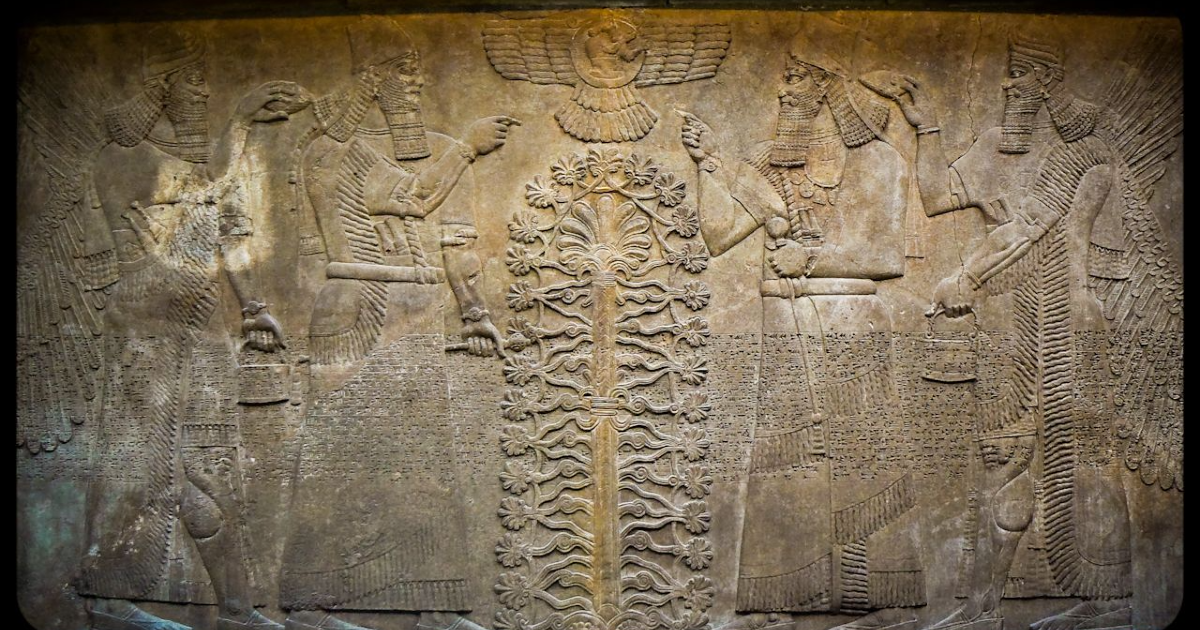
Some bas reliefs at the Northwest Palace in Nimrud show the Apkallu and Lamassu flanking a sacred symbol called the “Tree of Life.” The Tree of Life is a key element in ancient Assyrian art and religion. It represents the divine connection between the heavens, the earth, and the underworld. Artists often depicted the sacred tree with multiple branches and symmetrical designs. It symbolizes fertility, growth, and the eternal cycle of life. The presence of the Apkallu and Lamassu beside the Tree of Life emphasizes their roles as protectors and intermediaries between the divine and the mortal realms. The Apkallu, with their part-human, part-fish or bird appearance, perform ritualistic gestures in the reliefs. Which suggest they are tending to or blessing the tree.
Wrist Watches?
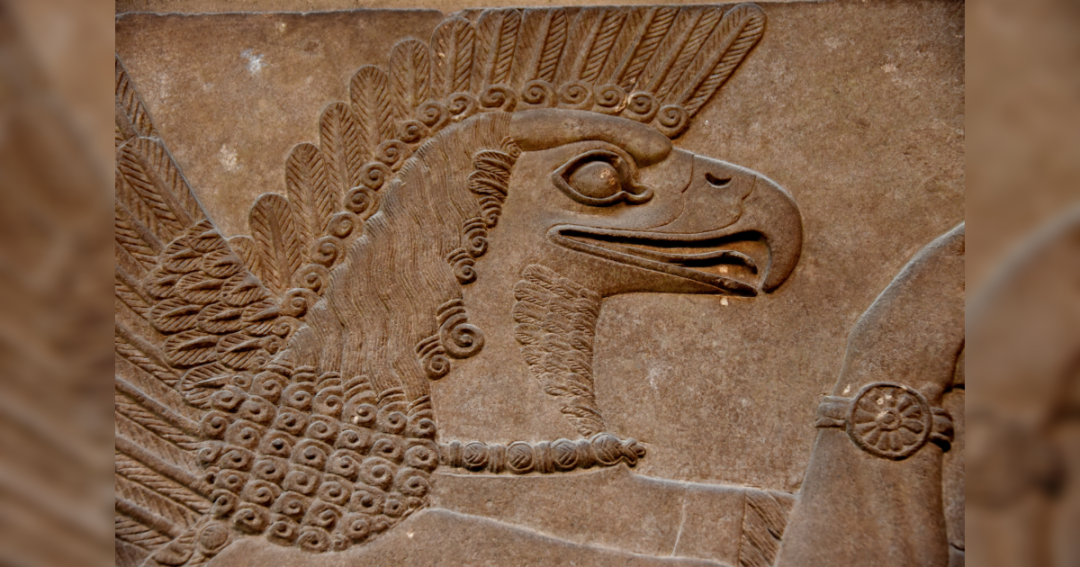
Some figures, including the Apkallu, wear distinctive wristbands in the reliefs. The wristbands depicted in the bas reliefs of the Apkallu are floral motifs, specifically rosettes, which represent a stylized flower. These floral designs are significant in Assyrian art and mythology, symbolizing life, fertility, and divine protection.
Hand Bags?
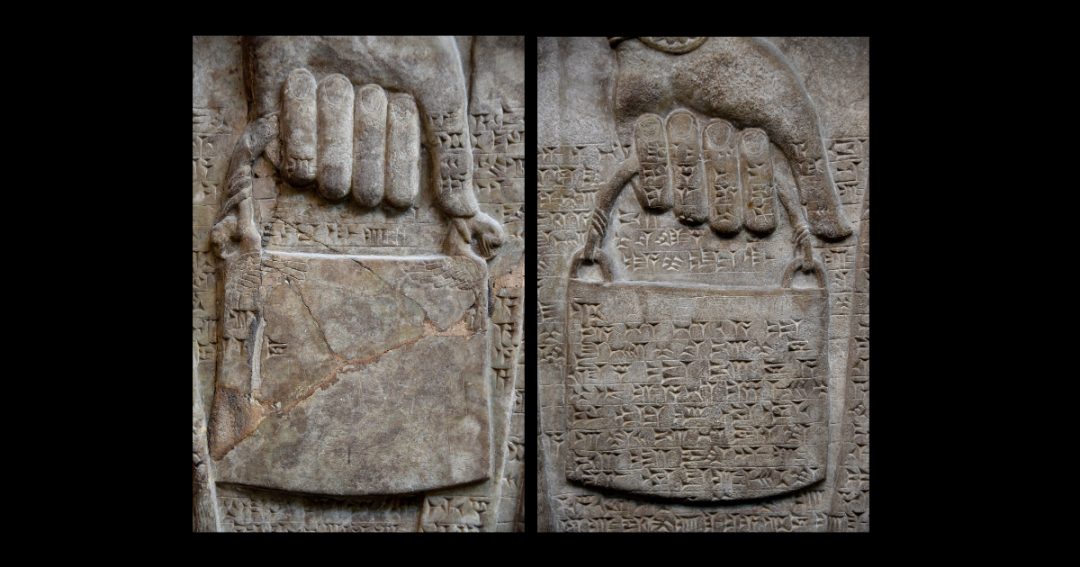
Many viewers mistakenly describe the objects as handbags, but the Apkallu actually hold buckets. Banduddû translates to “bucket” or “purifier”. Akkadian texts call these buckets Banduddû, and the bas reliefs clearly show the Apkallu carrying them. These buckets used in purification rituals, symbolizing the cleansing and protection. They held what was believed to be sacred water from melted snow. Ancient Sumer was in southern Mesopotamia, but Assyria was to the north, far enough to the north of Assyria were mountainous regions that accumulated snow. Assyrians thought that the snow on the mountains was scared & came from the sky gods/goddesses.
Pineal Gland?
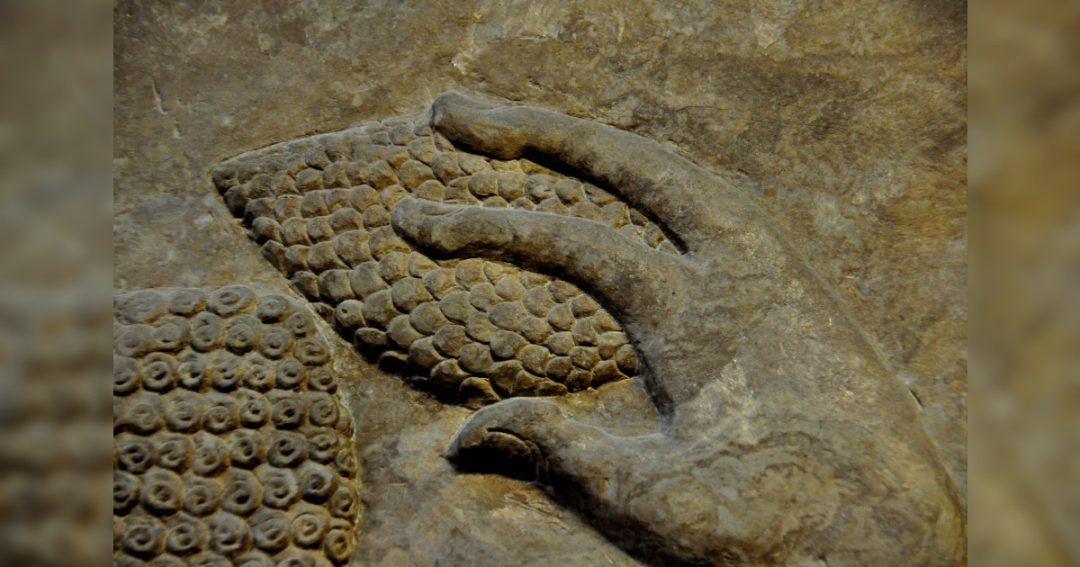
And finally the “pine cones” which have been referred to as styluses, or the pineal gland and all sorts of “woo”. When they are in fact “pine cones” from Lebanese cedar tree and represent a cone from the male pollinating tree. They were dipped into the sacred bucket to capture water to sprinkle on the tree of life or the Apkallu in a purification ritual.
For more insights that unravel Ancient Mysteries check out Senenmut’s Star Map: Unlocking Cosmic Secrets of Ancient Egypt

